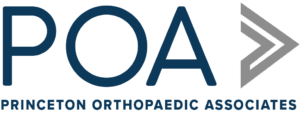
Physician Assistants
Physical & Occupational Therapists
KneeMRI ScansNon-OperativePhysiatry
Physical Therapy
Podiatry
Spine
Sports Medicine
TraumaUrgent Care
X-Ray Imaging

Muscle strains are a pretty common orthopaedic condition. You’re likely going to experience muscle strain during your lifetime.
Muscle strains can result from overexertion or sudden movements, often when the muscle is either stretched too far or injured by a direct blow. Or, as you get older, they can be caused by simply getting out of bed (haha!)
Muscle strains are also more likely to occur in individuals who lack flexibility or strength due to advancing age, inactivity, injury, or other health-related issues. Here are some tips for treating muscle strain and getting back into shape!
When you have a muscle strain, you’ll know it. It hurts. You may experience pain, tenderness, spasms, and limited movement. Other common signs include bruising, swelling, warmth over the site of injury, or abnormal skin coloration.
Muscle strains are typically caused by sudden, unanticipated movements or overexertion of the muscle. How muscle strains occur are usually associated with an active lifestyle–which is great!–but they can dampen your enthusiasm for what you’re doing to stay in shape. Muscle strains can result from overuse, stretching a muscle too far, or being hit with an unexpected blow. Muscle strains are more likely to occur in individuals who lack flexibility or strength due to advancing age, inactivity, injury, or other health-related issues. That’s why practices like active stretching or pilates are essential for prevention.
Thankfully, not all strains require a trip to the doctor, but you should take them seriously and let us help you. If the pain or discomfort lasts longer than a couple of days or you notice severe bruising or discoloration, we recommend you come in. We’ll be able to pinpoint the problems and even figure out whether the problem is something severe, such as a ruptured or torn ligament.
The best way to treat muscle strain is to apply a brace to the injured area and take anti-inflammatory medication like ibuprofen or naproxen. Applying an ice pack to the injury for 15 minutes can also help reduce inflammation, relieve pain, and speed up recovery.
Unless otherwise indicated by a physician, you should avoid using heat on the injured area to prevent tissue damage and promote healing. You should also avoid stretching or massaging the injured area, which could worsen the tear. Keeping your leg elevated for as long as possible after you have sustained a muscle strain will also help reduce swelling and decrease pain. (Side note: You mustn't put weight on an injured leg until it has completely healed).
Here are some things you should do at home if you have a muscle strain:
One way you can treat a muscle strain is to use the RICE method. The acronym stands for Rest, Ice, Compression, and Elevation.
To follow the RICE method, you will need to rest your muscle strain. This means taking some time off from activities that put pressure on your injured area and resting it in a comfortable position. You should also apply an ice pack to the injury for 20 minutes at a time, every hour or so. Make sure not to apply pressure directly onto the injured area with the ice pack. Use a towel or cloth between your skin and the ice pack. Finally, use an elastic bandage or ace wrap to keep your injured area compressed.
If you experience a muscle strain, it is important to take care of the injury right away. Try some of these home remedies for muscle strain to help speed up the healing process:
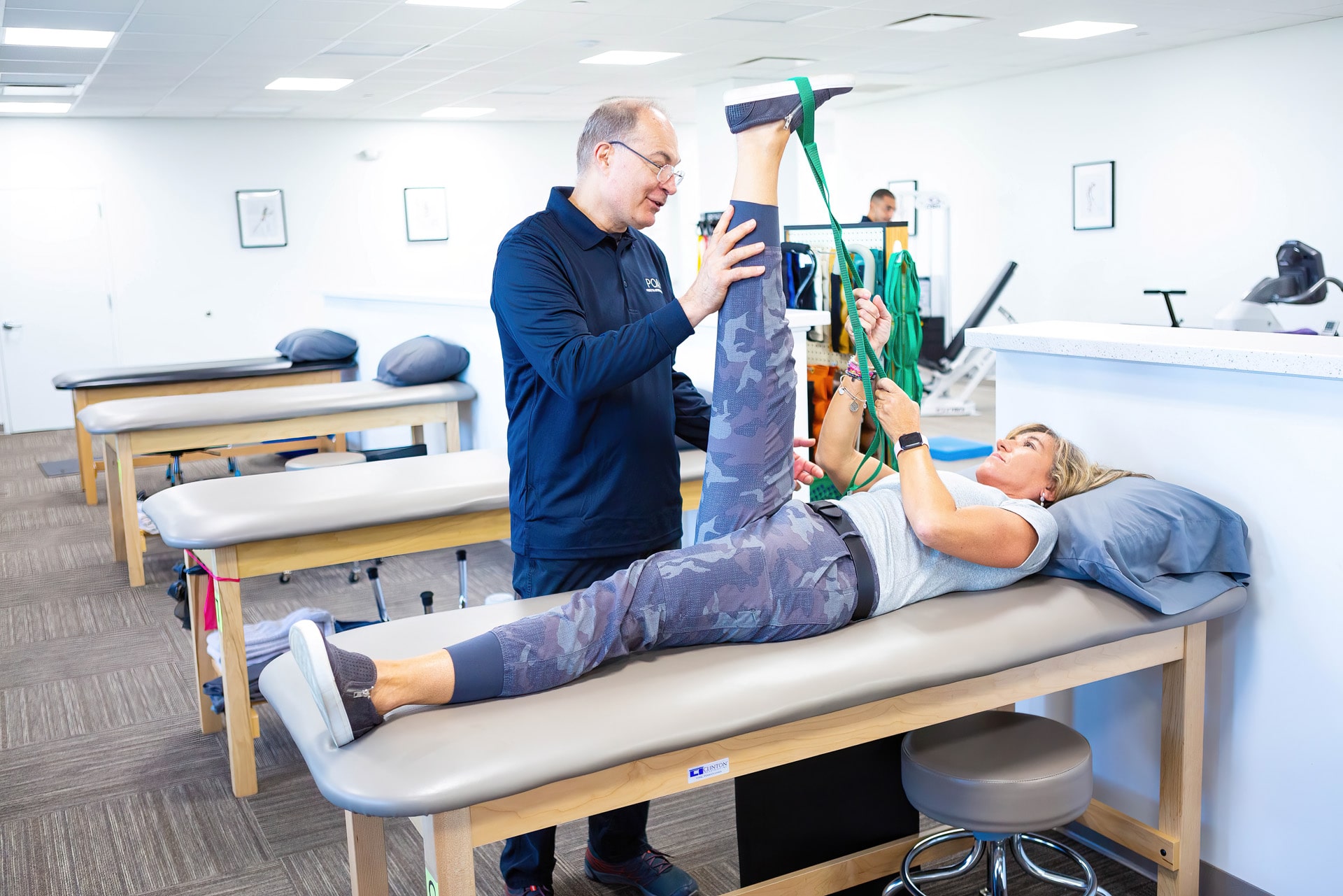
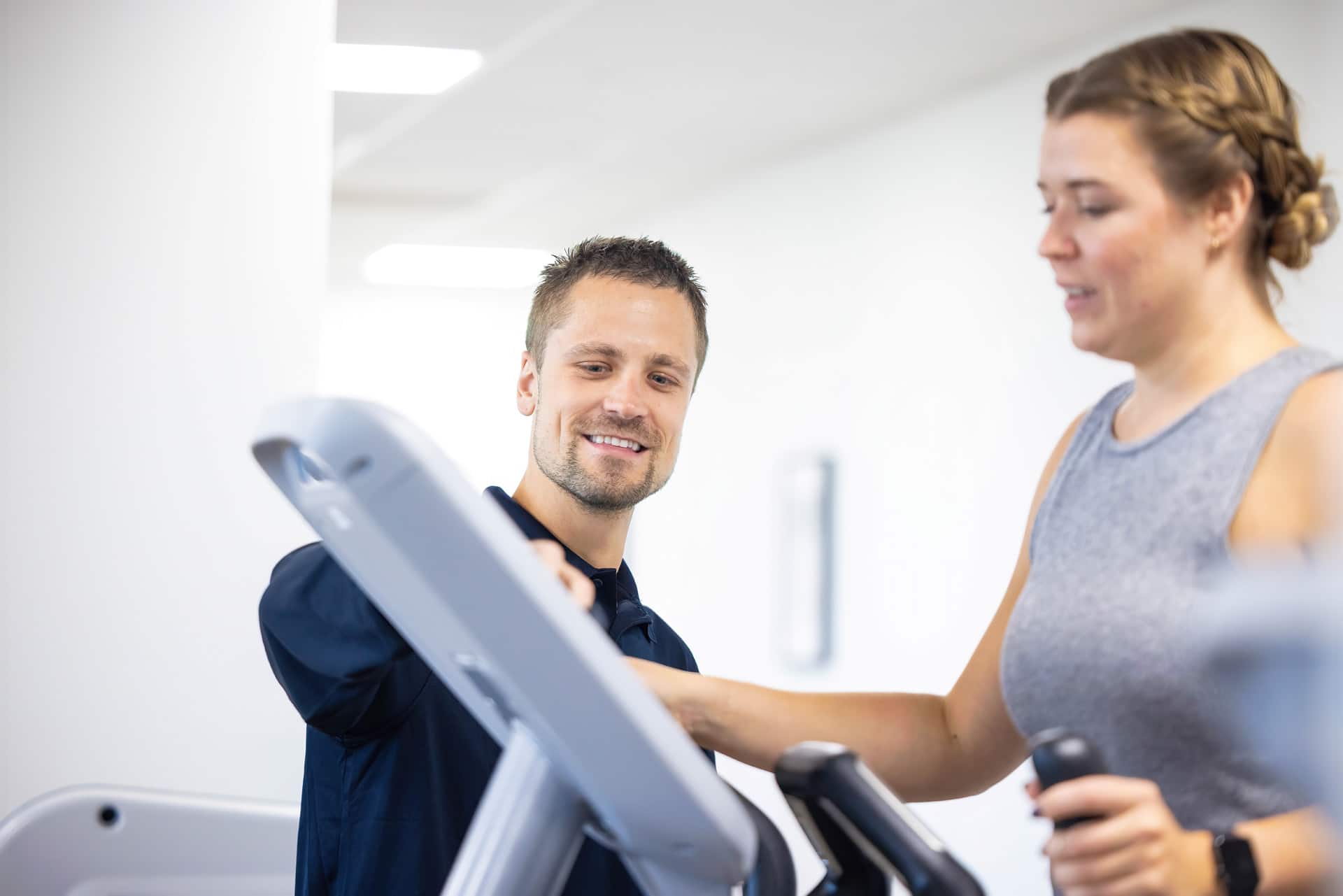
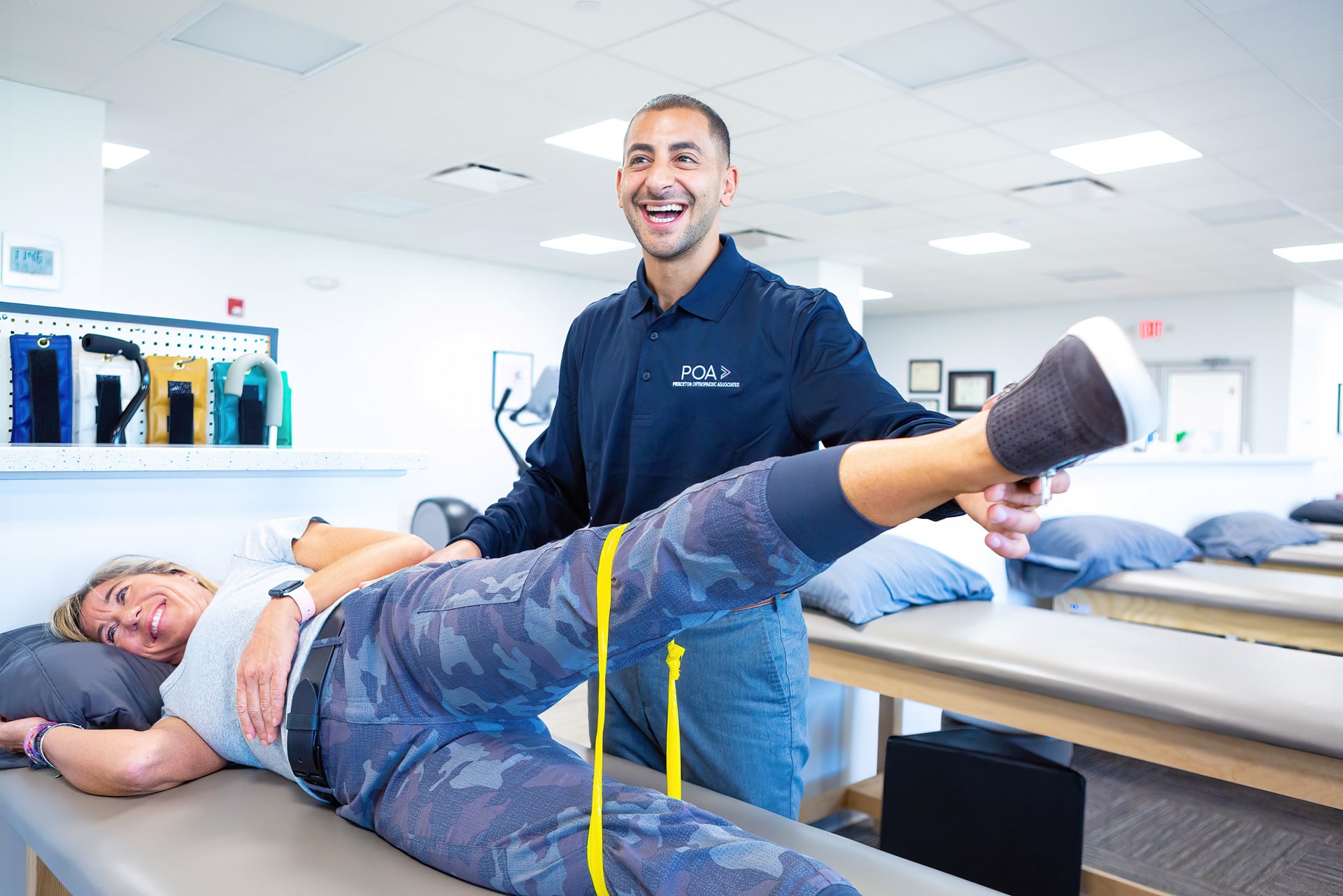
The best way to rehabilitate muscle strains is to try out some rehabilitation exercises. Rehabilitation exercises are used to strengthen the muscles around the injured site and promote healing and prevent future injury. Some of the most common rehabilitation exercises include:
These rehab exercises are designed to help your body heal itself and get back into shape after an injury. Rehabilitative exercises also serve as a preventative measure, which means they can be beneficial in cases where a person has experienced previous injuries or has certain health conditions that make them prone to injuries.
Muscle strains are preventable with the proper methods. To prevent muscle strains, you should focus on increasing your flexibility and strength. You can do this by exercising regularly and stretching before you exercise. You should also avoid overexerting yourself, meaning that if you're getting a little tired or sore during a workout, it's time to stop and take a break.
Muscle injuries are one of the most common injuries in any athletic or physical activity. They are especially common in sports like soccer, rugby, and football. In this blog post, we’ve outlined the most effective ways to treat muscle strain. Depending on the severity of the injury, you should seek medical attention. In the meantime, you can use the RICE method to relieve any pain and swelling. Home remedies like ice baths and cold packs can also be helpful in your recovery process.
The best thing you can do is take preventative measures to avoid getting muscle strain in the first place. Avoiding heavy lifting and stretching before and after workouts is a great way to start.
Tendonitis is not as scary as it sounds. It’s a type of inflammation that affects tendons, the tissues that connect muscles to bones. If you have elbow tendonitis, it means that you are overworking your muscles and stressing the tendons in your elbow. Athletes are more prone to developing tendonitis because their activities stress their joints and tendons in a way that can cause friction and irritation. However, anyone who engages in repetitive motions can contract tendonitis. Tendons can become inflamed for many reasons, including overuse of that joint or activity; improper technique while exercising; stressors such as dehydration; strain from awkward positions; excess body weight; and even genetics may play a role.
If you have tendonitis in your elbow, there are a few treatment options available to you. One, ice the inflamed area to reduce swelling and pain. The idea behind icing is that cold temperatures can help reduce inflammation and pain, allowing for a more comfortable healing process. If you want, you can wrap the ice in a towel before applying it to your elbow, but it’s not necessary. You should keep icing your elbow for 10-15 minutes at a time every few hours or as needed. You can also use an ice pack or gel pack, which provides more relief than ice cubes because it delivers more consistent pressure on the inflamed tissue. If it persists, try applying heat instead to increase blood flow and circulation along with decreased inflammation.
Other options include taking over-the-counter anti-inflammatory medications for temporary relief of pain and stiffness. You could also wear a splint if your symptoms are severe or don't respond to other treatments. If that doesn’t work, you could try professional massage therapy treatments at least once a week for three weeks. Another option is to stretch your muscles as often as possible by gently reaching out on your fingertips against resistance from one hand with the other hand. Lastly, do gentle exercises that don't aggravate the tendonitis such as using light weights with small repetitions or using a stationary bike.
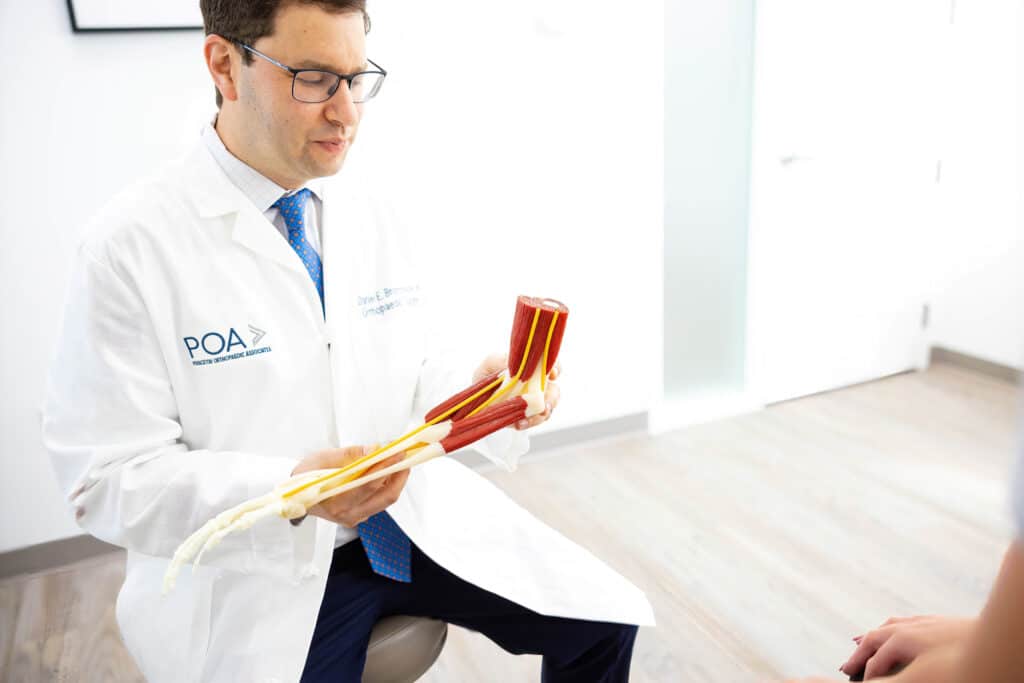
One of the best ways to treat tendonitis is to change your environment. This includes taking a break from your activity and finding ways to exercise that don’t cause pain in the affected area. You may need to modify or switch up your exercise routine, such as doing exercises with a ball instead of weightlifting. Additionally, you should take care of your body by drinking more water and eating more protein-rich foods. If you still have pain despite changing your environment, there are other treatment options available as well. You can use ice packs and massage therapy to help relieve the pain and inflammation. If this doesn’t work, ask for a cortisone injection in the elbow area, which will decrease the inflammation over time. Other treatments include acupuncture or one of many different medications prescribed by a doctor.
If you develop tendonitis in your elbow and don’t want to take medications or stop activity all together, physical therapy may be the best option for you. When it comes to healing tendonitis in your elbow, there are two different ways that physical therapy can help. The first type is manual therapy. Manual therapists, also known as physical therapists, work with your muscles and joints through a variety of techniques including massage, stretching, resistance training, and joint manipulation. This type of therapy is often used to treat tendonitis in the elbows because it focuses on strengthening the joint while decreasing stiffness and pain. The second type of physical therapy that may help heal tendonitis in your elbow is a form of exercise called "dry needling." A therapist inserts a small needle into the patient’s muscle beneath the skin to release tightness or trigger points caused by repetitive motions or stressors like dehydration. Dry needling is effective at treating chronic pain associated with tendinitis because it targets the root of the problem rather than just relieving symptoms.
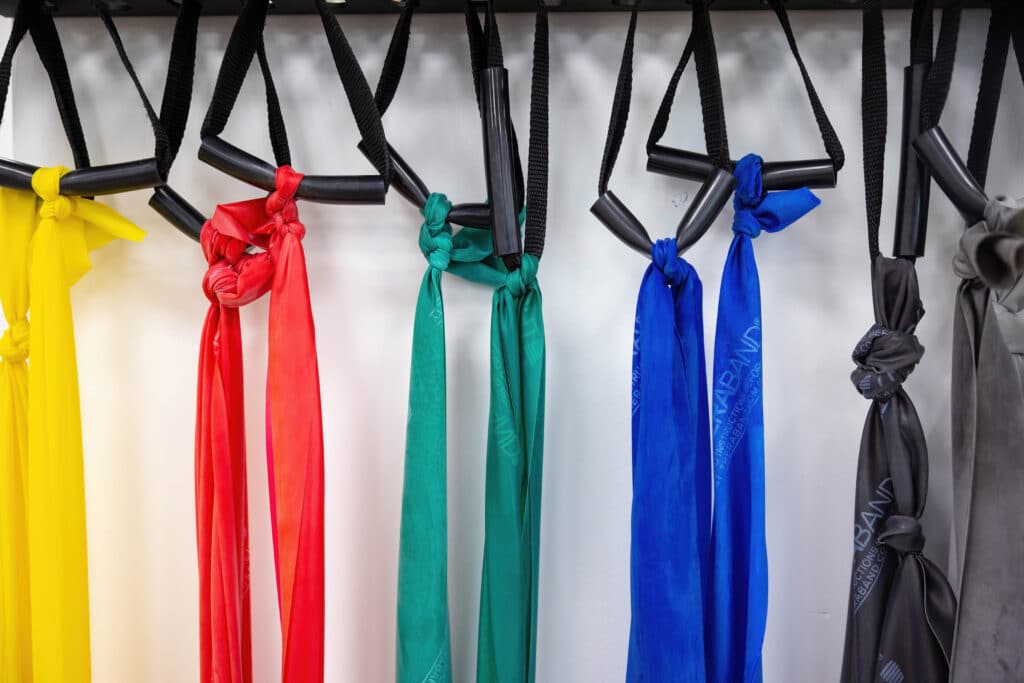
The best treatment for tendonitis is to address the underlying cause. For instance, if you are an athlete and regularly engage in repetitive motions that cause your elbow to become inflamed, you need to stop doing that activity. If you are suffering from elbow pain due to overuse, you can try using ultrasound therapy. Ultrasound therapy helps by reducing inflammation and stimulating blood flow to the tissue. It also increases the production of collagen and nitric oxide, two substances that promote healing in an inflamed area. Ultrasound therapy is a non-invasive way to treat tendonitis without having to take any medication or undergo surgery. All you have to do is get an ultrasound treatment which takes about 15 minutes and can be done at home or at a clinic. The only risk associated with ultrasound therapy is if you have a pacemaker or other electronic device implanted in your chest area because it can interfere with the electromagnetic waves emitted by the device.
If you suspect that tendonitis is the issue, the first step is to rest the arm and discontinue any activities that could be causing an overload on your elbow. Next, try some rehabilitation exercises. These are designed to stretch tense muscles and strengthen ones that have atrophied due to not being used as often. Consider using a wrist splint or brace if you're experiencing pain in your hand while doing these exercises, or if you're experiencing carpal tunnel syndrome.
Tendonitis is not as scary as it sounds. It’s a type of inflammation that affects tendons, the tissues that connect muscles to bones. If you have elbow tendonitis, it means that you are overworking your muscles and stressing the tendons in your elbow. Athletes are more prone to developing tendonitis because their activities stress their joints and tendons in a way that can cause friction and irritation. However, anyone who engages in repetitive motions can contract tendonitis. Tendons can become inflamed for many reasons, including overuse of that joint or activity; improper technique while exercising; stressors such as dehydration; strain from awkward positions; excess body weight; and even genetics may play a role.

© 2023 Princeton Orthopaedic Associates. The contents of princetonorthopaedic.com are licensed under a Creative Commons Attribution-NonCommercial 4.0 International License. Copying without permission is strictly forbidden.